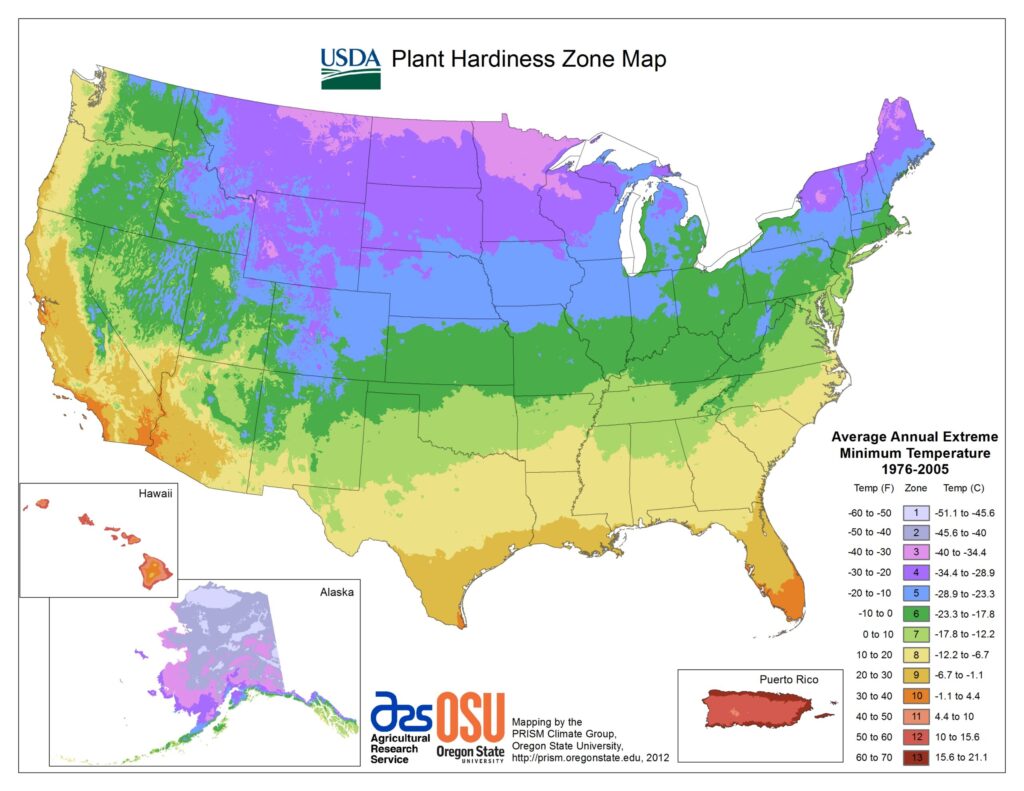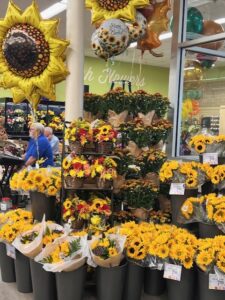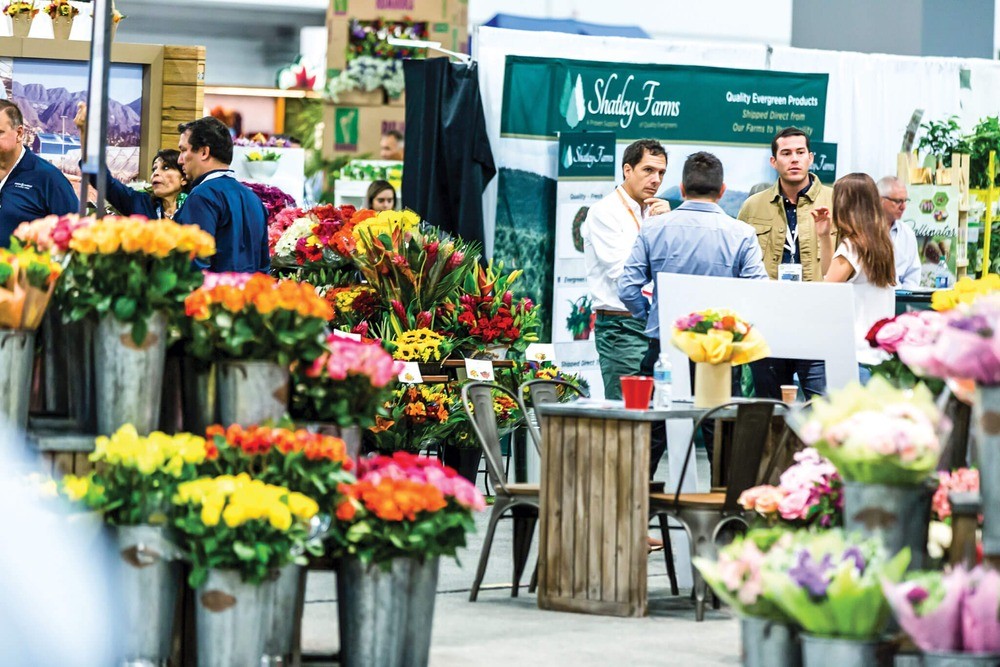The Positive PR of the Harvest
By Cynthia Hanauer
When it comes to gardening, it seems that Spring gets all the positive PR and Fall is known as the “Grim Reaper” of the planting season-the time of year when the beauty of Spring and Summer begins to fade before the white blanket of snow eventually arrives. Spring is known for “planting new life” while Fall is known as the “harvest” – bringing everything in.
But nothing is further from the truth! Indeed, the beauty of the Fall harvest theme is an important one, but bushel-baskets full of important sales and profits are missed when customers think of Fall as the “end” of outdoor planting. In reality, the most beautiful and profitable garden products can be marketed in Fall. If this important segment of the planting year is missed, then the s.l.o.w….sales of Summer will extend right into November- and no one wants that, right?
Admittedly, there is important information about Fall planting that we must provide to our customers so that they feel confident about reversing an old way of thinking about Fall planting. And then, with the powerful nudge of dramatic outdoor displays, our customers will convert their way of thinking from “bring inside” to “plant outside”! Our customers will benefit from the beauty, and our sales and profits will benefit exponentially, as well!
Let’s start with the basics:
The planting seasons of Fall, like Spring, are seasonal by area. Today, there are great tools to help understand each of your region’s Fall planting seasons. But first, let’s start with basic knowledge that is nationally applicable, regardless of regionality:
Freeze Terminology
- Light freeze: 32-29°F—tender plants are killed.
- Moderate freeze: 28° to 25°F—widely destructive to most vegetation.
- Severe freeze: 24°F and colder—heavy damage to most plants.
This is important education for your customers, as many plants still survive at 29 degrees! If your customers don’t know this, they will simply shut down all planting after July – an incorrect ideology that adversely affects sales when we need them the most!
US Plant Hardiness Zone
The USDA publishes a great map which shows the lowest temperature ranges by state. This is a great reference map for companies who sell in multiple states across the country. What’s important to note on this map is that in Zones 10-13, outdoor vegetation can be planted all year long with minimal chance of freezing! This is important information for your customers to know, and for us to promote!
Freeze Projections by State
The Farmer’s Almanac is a great resource to understand freeze projections by individual state and even by individual zip code. The almanac pulls historical weather data from the nearest weather station to a particular zip code and can provide accurate projections of the first frost dates to the last frost dates in that specific area.
Here’s the link:
https://www.almanac.com/gardening/frostdates
The Difference Between Freeze and Frost
The terms “freeze” and “frost” are not the same, but they are often incorrectly used interchangeably. A freeze is when the air temperature reaches the freeze threshold referenced in the section above titled, “Freeze Terminology”. A “frost” can occur when the temperatures are above freezing but the amount of water in the air causes a frost to occur. Frost causes ice crystals to form in plant cells, making water unavailable to plant tissues which disrupts the movement of fluids. A “freeze” can occur without frost, and a “frost” can occur without a freeze. The amount of water in the air is the differentiating factor between the two.
Advantages of Fall Planting
- Plant Protection Measures
- As they say, in many areas of the nation one can get a sunburn and frostbite in the same week! Regardless of the season, it’s wise to make sure store associates are trained in basic plant preservation if a frost or freeze is suddenly forecasted:
- Water the soil around the plants thoroughly (except succulents). Wet soil holds heat around the plants much better than dry soil, protecting the roots and warming the air near the soil.
- Cover vulnerable plants with sheets or drop-cloths, using stakes to keep the cloth from laying heavily on the plants. Remove coverings when temperatures rise later in the day.
Customer Tips:
o For short-term frosts, plants can be covered with simple straw or mulch and simply “leaf-blown” away when the temperature increases.
o Container plants can be pulled close to the house under an overhang.
o Don’t overreact! Plants are resilient. If signs of frost damage are seen, resist the temptation to pluck the damaged leaf off or dig up the plant. Wait until the warmer weather comes in and many times the plant will continue to sprout as normal. If not, simply pull it out and plant another one!
- Autumn’s cooler air temperatures are kinder to plants and gentler to gardeners!
- The soil is still warm from Summer, allowing roots to grow until the ground freezes. Conversely, in the Spring, plants don’t start growing until the ground warms up.
- There are more good planting days in the Fall versus Spring, when rain and other unpredictable weather can render the soil difficult to work with. Remember…Spring has its own frost vulnerabilities, as well!
- Pest and disease diminish in the Fall and fertilizers are not needed, either. Fertilizing should cease by late Summer.
- Visit other garden centers and seek the recommendations of your local garden suppliers to stay informed of the best Fall products to promote in a specific area. There are new Fall outdoor items being developed all the time!
Let’s Get Sellin’ and Plantin’!
Grasses, spring-blooming bulbs, cool-season vegetables, perennials, hardy mums, trees, and shrubs can all be effectively planted in the fall.
Here are the top categories:
Fall Mums
Oh, those jewel-tones…how do we love thee? As the sunlight diminishes after the Summer months, Fall Mums love it and take center stage! Fall mums offer the best in color, shape and size and there is no other plant that can compare!
Fall Pansies
Pansies are another great choice for Fall planting and they last from early autumn through early Spring! Pansies look delicate, but they are a powerhouse of Fall planting in vibrant yellows, blues, oranges and purples! By planting in the Fall, the customer will get two seasons of enjoyment out of these cold-loving beauties!
Spring-Blooming Bulbs
Fall provides a “second” season to plant bulbs. All spring-blooming bulbs such as daffodils, grape hyacinth, allium need a period of cold dormancy to bloom and Fall is the perfect time! Bulbs should be planted as soon as the ground cools down, and optimally when air temperatures range between 40-50 degrees. Planting should be done at least 6 weeks before the ground freezes.
Ornamental Kale
Kale and ornamental cabbages also prefer cool weather. Although kale can be planted in the Spring, they prefer a Fall planting. This timeframe will allow the plants to become established and will eliminate the legginess that results when kale is planted in warm conditions.
Trees and Shrubs
Fall is the ideal time to plant trees and shrubs! The weather is cool, but the soil is still warm enough for root development. The combination of warm soil and cool air stimulates root growth, which will help your tree or shrub get established before the ground freezes.
Pots and Containers
Don’t forget to offer a large assortment of pots and containers! In addition to customers planting outside during the Fall season, they’ll also be bringing plants inside and will be looking to purchase empty pots to display them inside!
Evergreens
Don’t blink! The fall planting season is immediately followed by stunning outdoor displays of evergreen wreaths, Christmas trees and pine roping. Say what? Time flies when you’re havin’ fun!





